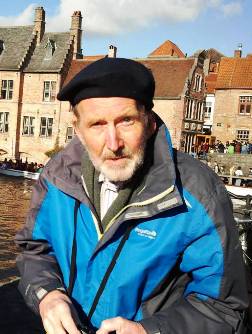 Geophysicist who pioneered geomagnetic research on varves and whose research in Wales led to the discoveries made by the Mochras Borehole.
Geophysicist who pioneered geomagnetic research on varves and whose research in Wales led to the discoveries made by the Mochras Borehole.
Roy King (b. 14 August 1925) became a geophysicist in the early 1950s. Technical developments over the previous decade had made it possible to make geophysical measurements on land, at sea, from the air, and in boreholes and were rapidly extending knowledge of the Earth’s structure and dynamics. It was a good time to enter the subject.
King took a first in Physics at Cambridge followed by a PhD on friction with David Tabor. But he was ready for a change from laboratory physics and was glad to accept an invitation from Donald Griffiths, a geologist, to join him on an expedition to collect varved clays in northern Sweden.
Griffiths had worked in geomagnetism with Blackett at Manchester and had recently been appointed lecturer in the geology department of the University of Birmingham. His object was to study the depositional magnetisation of the clays hoping that it would reveal the secular variation of the geomagnetic field for an interval of several thousand years, beyond that observed from observatory data in the last half millennium. It was thought that this would throw light on the magnetic field-producing mechanism.
After the expedition, King was awarded an ICI Fellowship at Birmingham to do experimental and fieldwork on varves with Griffiths. In 1955 he was appointed Lecturer in a new sub-department of geophysics to start one of the first two 12-month taught MSc courses in the UK to meet the growing demands of the oil, mining, and engineering industries.
The work on varves was continued with a succession of students and led to ways of correcting for the deviations of the magnetisation directions from the field directions. It did not lead to any great extension in knowledge of the secular variation, largely because of a shortage of undisturbed layers; but together with studies of magnetic susceptibility greatly improved understanding of the deposition of fine-grained sediments.
The partnership also developed new teaching and research interests in Wales which concentrated for several years on following up a regional gravity survey by D W Powell, one of Griffiths' early students.
Fieldwork – while camping or living in makeshift accommodation – was very much to King's taste. For several years it concentrated on a large fault discovered by Powell bordering the Cambrian rocks along the coastline near Harlech. This seemed to indicate a hitherto unsuspected sequence of younger rocks beneath Cardigan Bay. King took charge of refraction seismic work to study the stratigraphy of this basin and was able to verify its existence and to estimate its thickness and likely origin. Seismic work at sea was not as common as it was to become and King introduced a number of innovative techniques including shot firing at sea, with recording on land, and at sea using ordinary geophones laid on the sea bed.
This work, together with his course teaching in seismology, led to the second main thread of his research career. His later investigations included two landmark long-range profiles: the Kenya Rift International Seismic Profiles (KRISP) to study the deep structure of the African rift from 1967-90; and the 1981 north-south Lithospheric Seismic Profile of Britain (LISPB). But he also pioneered the development of short-range reflection and refraction measurements applicable to civil engineering and hydro geological problems.
King and Griffiths became lifelong partners in teaching and research. The two editions of their text-book Applied Geophysics for Geologists and Engineers were popular with practitioners and students. They became great friends and, when King married Sheila Griffiths who was on the first Swedish expedition, became brothers in law. Sadly, Sheila died in 1977 after a long series of illnesses.
King was firmly rooted in Birmingham and was content to spend the remainder of his working life in its University making no attempt to pursue the promotion that he could undoubtedly have had elsewhere. He claimed to dislike administration though he was adept at organising his own work and that of his collaborators. He retired in 1990 as Reader in Geophysics, a fitting recognition of his academic status and the way he chose to work.
When he was not working he followed a wide range of interests. In addition to hill walking, often in the company of his extended family, he enjoyed music, literature, travelling, and political discussion. He became fluent in German. In his last years he also learned Italian so as to best enjoy his visits to his daughter and her family in Verona. At home he kept up contacts with many friends from his student days, his own students and collaborators and his family and neighbours.
He continued to work long after his formal retirement. Despite an increasingly frail appearance he remained active until he was struck by a sudden acute, and eventually fatal infection shortly after his 89th birthday (d. 20 August 2014). His two children, John and Kirsten, and four grandchildren survive him.
Anthony Rees
Aftab Khan